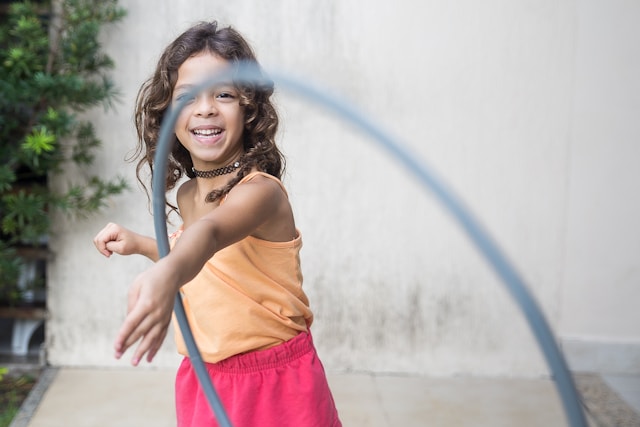Whitney Houston sang, “The children are our future.” Yet while adults adhere to deadlines and pay rent, the youngest and most vulnerable members of society are vulnerable to resource shortages. Cultivating a nurturing community requires the active participation of people of all ages. What can you do? Consider these five ideas for making life better for kids.
1. Improve road safety
Your children will naturally want to spread their wings and act more independently as they grow, but they need the right infrastructure to do this. Unfortunately, a simple trip to the street playground can be fraught with danger, as many rural roads have no shoulders and riding in city traffic can be a challenge even for adult professionals.
Improving pedestrian transportation infrastructure can help children in two key ways. One – it makes it safer for them to go to the park or their best friend’s house. Second, it could mitigate climate change, which poses unknown threats in adulthood. Humanity is already feeling the effects, with fossil fuel-based transportation one of the largest contributors to global greenhouse gas emissions.
Many regions in the United States could benefit from the example of China, which has made great strides in greening its urban transportation systems in recent years. Wide tree-lined walkways run parallel to the road, ensuring the safety of cyclists and walkers. Trees also absorb carbon from the atmosphere and help combat the urban heat island effect.
These improvements also benefit small businesses. Think about it, you don’t go shopping at 75 miles an hour, but foot traffic drives impulse sales. You can advocate for such improvements by attending city or municipal planning and zoning commission meetings or even running for the board yourself. Attending social events with leaders involved in such programs and writing letters to the editor of local newspapers are other ways to advocate and generate interest.
2. Create neighborhood safe spaces
Improving roads can reduce traffic hazards, but it does not eliminate predators. However, Neighborhood Safety Zones make it safer for children to walk to class while building community.
Security expert Gavin de Becker describes such a scenario in his book Protecting the Gift. Every morning, a group of parents from one neighborhood in the city stand guard outside the front door, along with store owners and other adults deemed safe.
Implementing this change requires building connections with your neighbors. Consider partnering with a group such as the Rotary Club or posting flyers on community bulletin boards to increase interest. You might even get the local police involved. For example, businesses and individuals interested in becoming a safe haven that children can turn to when they feel unsafe walking outdoors can undergo background checks and post window stickers indicating their participation.
3. Attend family-friendly activities
Do you want an easy way to get to know your neighbors? Take a lesson from the pandemic and put a barbecue grill on your doorstep. The delicious aroma is sure to attract at least a conversation or two. From there, join forces. Host a neighborhood dinner where people of all ages can mingle while providing fun games for the little ones.
Such activities serve a dual purpose. They help you know who is safe while building community spirit. Additionally, they provide your youngest family members with the opportunity to develop social skills by meeting new people in a safe environment.
4. Upgrade your local playground with shade
Outdoor play is essential for a child’s physical, mental, emotional and social development. However, this is harder when climate change means more intense UV rays, especially during the summer holidays when they have the most time to play.
One of the best improvements you can make to your local playground is to add shade. The right cover can reduce UV radiation by up to 97%, keeping your child protected from the sun during the hottest times of the day. It also provides shelter from sudden downpours and a more comfortable place for adults to watch children play.
5. Get involved in local school activities
Finally, schools almost always need additional volunteers to oversee field trips and recess, and additional adult presence in the classroom can improve behavior and learning outcomes. Kindness goes both ways. School staff can often direct families with specific needs to community resources that can help.
You can get involved by attending local school board meetings. Additionally, volunteer as a classroom aide or guardian—you’ll often make your children happy while strengthening community ties.
Nurture children in the community
As the African proverb goes, it takes a village to raise a child. You can get involved in building such a system in your community by using the five ideas above.
Young children rely on adults to meet their needs and teach them how to follow a positive path. Let your example be the light that leads them to a brighter tomorrow.
 About the author
About the author
Oscar Collins is the editor-in-chief of Modded and writes about health and fitness. Follow him on Twitter @TMModded Get regular updates on his work and subscribe to Modded Minute to learn more!

